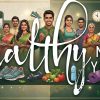Goa is abuzz with excitement as vintage bike and car owners, users, collectors and fans are decking […]

VICARIOUS AND JOINT LIABILITY IN CRIMINAL LAW! By Adv Vinayak Parob
April 09- April 15 2022, INFOCUS April 8, 2022Halal: The police under instructions from politicians very often miss-use their powers to prevent legitimate protests such as protests by Muslims in Karnataka on the crackdown on Halal meat.
By Adv Vinayak Parob
An offence under Section 149 of the Indian Penal Code is committed when an unlawful assembly in prosecution of a common object of that assembly commits an offence. In such a case every person who at the time of committing that offence is a member of that assembly or such members of that assembly, who knew the likelihood of the said offence being committed in prosecution of the common object of that assembly, is guilty and entitled for punishment.
SC Section 149 of IPC deals with the principle of constructive or joint liability and as such the accused committing offences can be broadly divided into two categories. That is, the principal offenders and the accessories.
Principal offenders are the persons who actually physically take part in the execution of the crime either by commanding, procuring or counselling the execution of the said crime. Whereas accessories are persons who assist in some way or the other the principal offender, either at the time of execution of the crime or before or after the execution of the crime. By and large to be termed as accessories and to punish the accessories, Sections 34 to 38 of IPC and Section 149 of IPC is incorporated in the Indian Penal Code.
However, there is a difference between Section 34 and Section 149 of IPC. An offence under Section 34 of IPC is committed if an act is done in furtherance of a common intention whereas an offence under section 149 of IPC is committed when an act is done in prosecution of a common object.
WHAT IS UNLAWFUL?
SECTION 149 covers perpetrators who have actually not participated in the crime but was only a member sharing common object of an unlawful assembly. Section 149 punishes non-participating accused in the same manner as if it was committed by the non-participating accused. For any assembly to be termed as unlawful as per section 141 of IPC, five or more person should gather with a common object to commit offence as under:
First: To over-awe by criminal force, or show of criminal force, the Central or any State government or parliament or the legislature of any state, or any public servant in the exercise of the lawful power of such public servant. Or
Second: To resist the execution of any law, or of any legal process. Or
Third: To commit any mischief or criminal trespass or other offence. Or
Fourth: By means of criminal force or show of criminal force, to any person, to take or obtain possession of any property or to deprive any person of the enjoyment of a right of way, or of the use of water or other incorporeal right of which he is in possession or enjoyment or to enforce any right or supposed right. Or
Fifth: By means of criminal force or show of criminal force to compel any person to do what he is not legally bound to do or to omit to do what he is legally entitled to do.
Section 149 of IPC is as under: “If an offence is committed by any member of an unlawful assembly in prosecution of the common object of that assembly, or such as the members of that assembly knew to be likely to be committed in prosecution of that object, every person who, at the time of the committing of that offence, is a member of the same assembly, is guilty of that offence.”
COMMON OBJECT
ANY assembly, which was initially not unlawful when it assembled may subsequently become an unlawful assembly, if such members of that assembly come to know that an offence is likely to be committed in prosecution of a common object. Under such circumstances every person who is a member of that assembly at the time of committing that offence will be guilty of commission of that offence. To constitute an offence under Section 149 of IPC, the member of an unlawful assembly should in prosecution of that common object of that assembly commit the offence, and the members of such assembly should have the knowledge with respect to likelihood of such offence being committed in prosecution of the common object.
In order to ascertain the commission of offence u/s 149 of IPC for the purposes of conviction and punishment, the same is divided in to two parts. With respect to the first part of Section 149 of IPC if an offence is committed in prosecution of a common object and with a view to accomplish the common object, then a prior meeting of the members of the unlawful assembly as to the common object is not required. Only if the common object is adopted and shared by all the members of the unlawful assembly then the case may fall under the first part of the offence punishable under section 149 of IPC.
KNEW OR KNOW
WITH respect to the second part, the expression “knew or know” does not actually mean a mere possibility of the commission of offence but when an offence is committed in prosecution of a common object, it would generally be an offence which the member of the unlawful assembly knew of the same being committed in prosecution of the common object. In every case the courts have to determine whether offence falls within the first part of Section 149 or the second part as there would be many cases which would come within the second part, but not the first, as in most of the cases all the members of the unlawful assembly though being present at time of commission of the offence actually do not participate in the execution of the final offence.
However, know the likelihood of the offence being committed in prosecution of that common object of that unlawful assembly.
Section 34 of IPC: Acts done by several persons in furtherance of common intention – when a criminal act is done by several persons in furtherance of the common intention of all, each of such persons is liable for that act in the same manner as if it were done by him alone.
Section 149 and Section 34 of IPC both dealing with cases of constructive criminal liability though are similar in some ways, in many cases they may perhaps overlap. The essential requirement for the vicarious criminal liability prescribed under Section 34 of IPC is the existence of a common intention. For a common intention to encourage the accused persons in leading to commission of a criminal offence, each of the accused persons sharing the said common intention is constructively liable for the criminal act committed by any one of them. Similarly, assembly of persons sharing the same common object is a feature of an unlawful assembly same as sharing a common intention is an essential feature of an offence punishable under Section 34 of IPC.
However, the common intention required to commit an offence under Section 34 of IPC is different from the common object required to commit an offence of unlawful assembly. Common intention postulates existence of a pre-arranged plan and a prior meeting of minds. For an offence under Section 34 of IPC to be committed an element of participation in action on the part of all the accused persons is required. If the prosecution fails to prove that the strength of the members of the unlawful assembly is five or more, than the court can convict the guilty under Section 34 of IPC if there is sufficient evidence to prove the common intention shared by the accused persons while committing the offence.
In several cases the object might be common, however the intention of the members may differ. Actual participation in action is necessary to commit an offence under Section 34 of IPC, whereas only being a member of the assembly at the time of committing of the offence is sufficient to commit an offence under Section 149 of IPC. Hence, though both Section 34 and 149 deal with constructive/vicarious liability they at times overlap. Under section 149 it is necessary that all the members knew beforehand that an offence which is actually committed was likely to be committed in prosecution of a common object. In absence of the same the other members of the assembly cannot be held liable under Section 149 of IPC.
In order to bring home a charge under Section 149 of IPC, it is not mandatory that five or more persons must necessarily be brought before the court. Less than five persons may be charged under Section 149 of IPC if the case of the prosecution is that the accused persons before the court and others numbering in all more than five composed an unlawful assembly, if these others being persons not identified and so not named in the charge sheet. If accused persons brought before the court along with unidentified and unnamed members composed an unlawful assembly, than those before the court can be convicted under Section 149 of IPC even though the unnamed and unidentified accused persons are not traced and charged. In cases though the charge names five or more persons as composing an unlawful assembly, there are possibilities of evidence showing unlawful assembly consisting of some other persons along with some other members who are not identified and named. In such cases for lack of evidence, court may come to a conclusion to acquit some of the persons named in the charge sheet.
However, may also convict accused named in the charge if there is evidence, as the evidence of involvement of some other persons not named and identified in the charge sheet will be sufficient not to displace the charge under Section 149 of IPC as some of the accused person named in the charge sheet are acquitted and the number has come down from five to three or two. In cases where evidence is confined only to the persons named and identified in the charge sheet and out of the same two or more are acquitted leaving before the court less than five persons to be tried than Section 149 cannot be invoked.
CONCLUSION
TO CONCLUDE though both sections i.e. Section 34 and Section 149 of IPC deal with cases of constructive criminal liability, in some cases they overlap though being similar in many ways and therefore the courts have to determine whether there was “Common Intention” or “Common Object” in commission of an offence so as to arrive at a conclusion.
(This article is the writer’s interpretation with respect to Section 149 and Section 34 of IPC out of his experience as an advocate practicing in criminal law in the state of Goa.)














